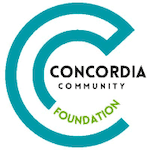
The Importance of Senior Rehabilitation
Following a hospital stay for an injury, surgery, or illness, many seniors begin a rehabilitation program designed to help them fully recover and improve their long-term health as they continue to live an independent living lifestyle. The goal of these programs is to increase strength, mobility, and balance, as well as to improve communication skills and cognition. Some studies show that rehabilitation after an incident, like a fall, can increase a senior’s chances of returning to an independent lifestyle by up to 80 percent.
Rehabilitation for Seniors – What’s Involved?
Senior rehabilitation programs often include a mix of physical, occupational, and speech therapy depending on the needs and the condition of the individual. Physical therapy helps improve range of motion, build strength and decrease pain from chronic conditions. Occupational therapy helps make activities of daily life easier, while speech therapy helps seniors communicate effectively.
Here’s a closer look at the different therapies involved in a senior rehabilitation program:
Physical Therapy:
Physical therapy for seniors helps speed up the recovery process by improving mobility, strength, and balance after any type of illness or injury, and also can alleviate pain from chronic conditions like arthritis or osteoporosis.
Occupational Therapy:
Occupational therapy for seniors enables individuals to participate in activities of daily living like bathing, dressing, and eating. Occupational therapy is also vital to those recovering from an injury, illness, or stroke, and it provides tools for addressing some of the issues involved in the early stages of memory loss.
Speech Therapy:
Speech therapy provides support and treatment for seniors who have difficulty communicating, hearing, swallowing or eating, and aids in recovery from a stroke or traumatic brain injury, as well as helping with communication problems due to dementia.
Improving Quality of Life and Boosting Independence
There are two types of senior rehabilitation programs; inpatient and outpatient. Ultimately, a physician will advise which type of program will allow the individual to regain as much independence as possible.
In an inpatient rehabilitation center, individuals have the opportunity to focus solely on the recovery process. Seniors receive daily physical, occupational, and/or speech therapy and remain in the center for a pre-determined amount of time. A short-term stay can last anywhere from a few weeks to a month, while a long-term stay can last up to several months. This type of rehabilitation requires a lengthy commitment, but individuals often find they meet their recovery goals in a shorter amount of time.
Outpatient therapy, on the other hand, allows individuals to return to their homes after participating in daily therapy rather than stay on campus. It’s important to note that these individuals are more in charge of their own recovery, so they need to stay motivated to continue therapy at home to experience results similar to those achieved through inpatient therapy.
Whether seniors require long-term or short-term rehabilitation in an inpatient center or through an outpatient program, there’s no denying the important role it plays in returning them to an independent, active lifestyle. Senior rehabilitation promotes overall wellness, ensuring individuals reach their goals and live as healthy and as confidently as possible.
Senior Rehabilitation at Concordia Life Care Community
At Concordia, our skilled nursing and senior rehabilitation programs maximize the physical, cognitive, emotional, social, and spiritual potential of all residents. Our skilled healthcare staff and innovative wellness programs create a comfortable, stimulating environment to help you or a loved one recover faster.
If you’d like to learn more about Concordia, contact us to schedule a visit to see all our beautiful community has to offer.
Health & Aging


